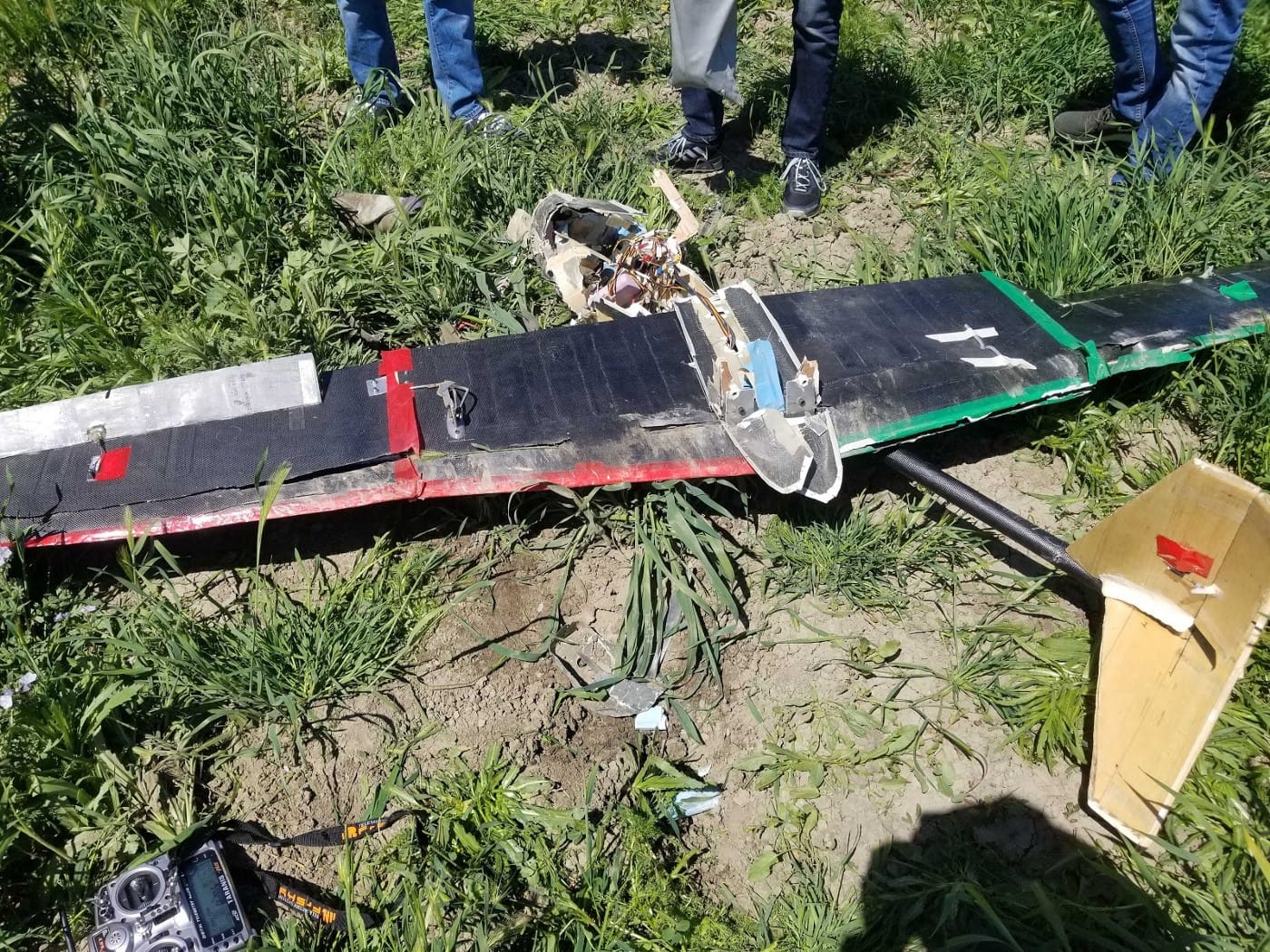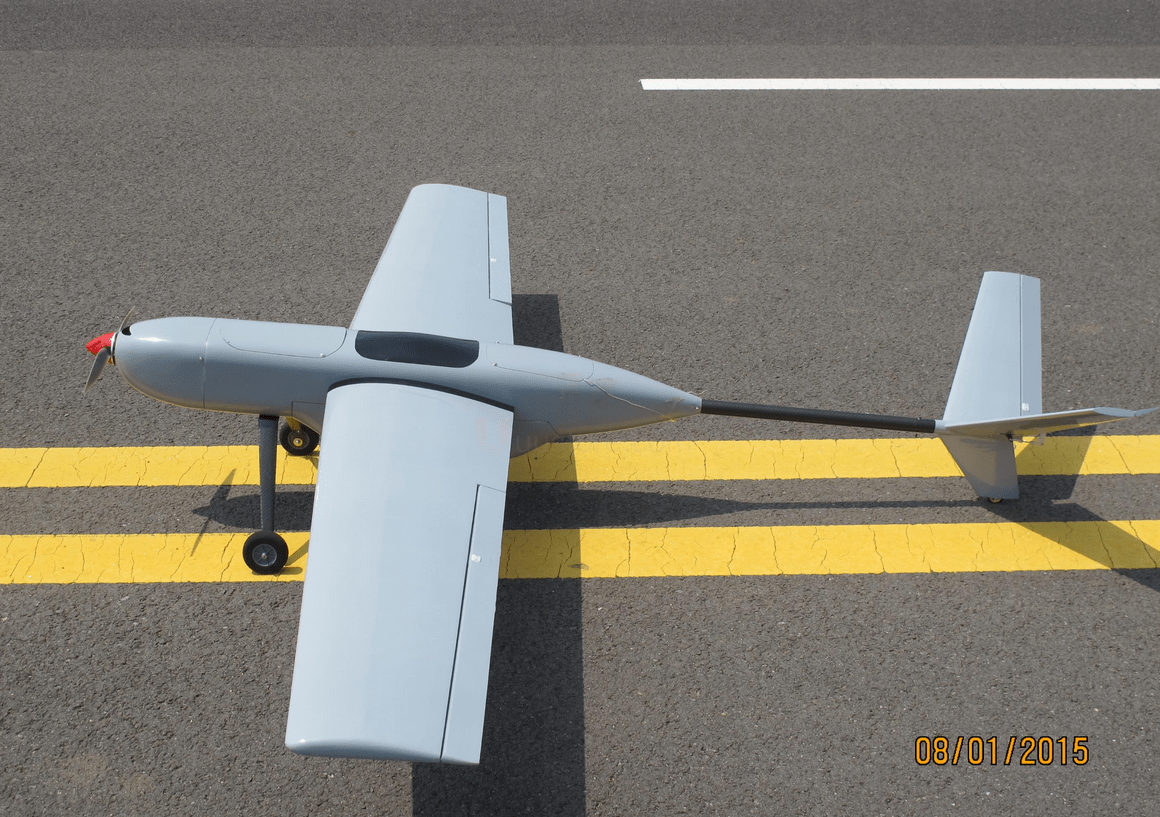Unfortunately, Triton UAS was not able to attend the AUVSI SUAS competition this year because our airframe crashed too close to the competition deadlines. Even though the team did not attend the competition this year, we did submit a technical design paper which includes a full description of the airframe we were planning to compete with.
Despite this setback, we learned several valuable lessons that will allow us to perform better in future years. The most important takeaway from this year is that our team needs to have a backup airframe ready for competition when testing the primary airframe so we can quickly recover from damage to the plane.
Fiber One Crash
At the beginning of spring quarter, we crashed our primary airframe, the Fiber One, because of a servo failure. Following this, we were unable to adequately prepare our backup aircraft, the Believer, because of issues with purchasing functional ESCs (electronic speed control) for the Believer’s twin motors. The first set of ESCs we bought for the Believer were defective and the second set were from different production years which gave different RPMs for the Believer’s twin motors. This scramble to find working ESCs introduced a delay we could not recover from.

After evaluating the issues with electronics this year, we began and will continue a comprehensive review of all onboard electronics. So far, we have concluded that we are going to upgrade to higher quality batteries, electronic speed controllers for the motors, and the motors themselves. Additionally we learned that we need to take note of how long our electronics have been used and replace electronics after crashes.
Plan for Next Year
The main focus for next year will be getting two backup airframes ready for competition in addition to tweaking the design and rebuilding our primary airframe, the Fiber One. The Fiber One is the plane we develop and build to be optimal for competition. We then plan to purchase and maintain two backup planes that can perform the mission in case of a Fiber One crash. Purchasing the backup planes would allow us to finish outfitting them on a shorter timetable, and quickly be able to use them to accomplish mission tasks, test new software, and practice running through the mission without risking a crash to our primary airframe.

In addition to outfitting backup airframes, we also plan on doing more research and consulting experts about the airframes, power systems, and other electronics before we make final purchasing decisions.
We are also in the process of designing and manufacturing a completely new airframe to accommodate the added payload demand of the new unmanned ground vehicle. After the crashes of this year, a main feature of this plane will be a short manufacturing time which will enable us to recover quickly between crashes.
Conclusion
While we struggled this year, we do believe that we are in a good position to compete in the 2019–2020 competition. We have learned several valuable lessons about risk management and mitigation. With these lessons in mind, we believe that our team can achieve some of the lofty heights we have reached in the past 16 years.